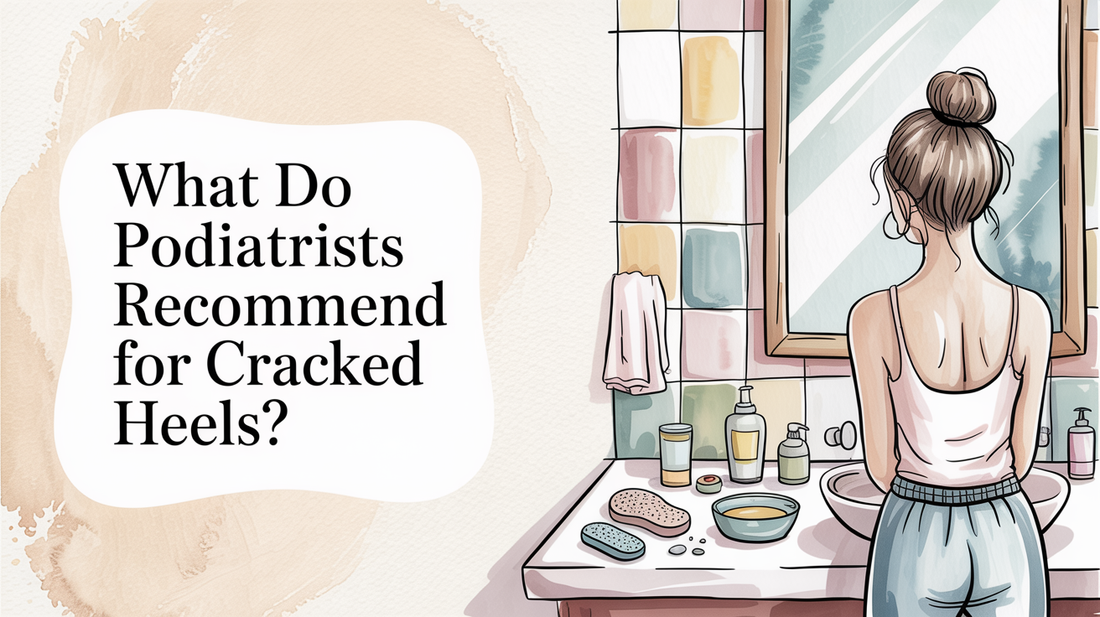What Do Podiatrists Recommend for Cracked Heels?
podiatrist cracked heels advice, medical treatments for cracked heels, professional heel care — Cracked heels can be a discomforting issue, often linked to various factors that podiatrists advise on managing effectively. This article outlines crucial insights into cracked heel causes and offers recommendations for at-home care and when to seek professional help. Let’s explore the insights from podiatrists to help you take action tonight!
What Doctors Say About Cracked Heel Causes 🧭
Podiatrists identify several key factors that may contribute to cracked heels, ranging from environmental conditions to personal health. Understanding these causes can help you take proactive steps to avoid discomfort.
One of the primary culprits is dry skin, often exacerbated by low humidity. Additionally, prolonged standing on hard surfaces can place undue stress on heel pads, leading to cracks. Conditions such as diabetes and eczema can further impair the skin’s healing abilities, making cracks more likely.
- Dry skin and moisture retention issues are common causes.
- Prolonged standing can increase pressure and cracking.
- Conditions like diabetes can affect skin healing.
- Poorly fitting shoes may fail to support heel skin adequately.
- Age-related changes reduce skin elasticity, making older adults more prone to fissures.
Try It Tonight: Calm, Fresh Feet ✨
- Wash feet with warm water and mild cleanser; dry thoroughly between toes.
- Apply a small amount of Kissable Feet where needed; massage until absorbed.
- Let skin breathe; slip on breathable socks if desired. Patch-test first if you’re new to this foot cream.
Podiatrist-Recommended Treatments and Products ✨
Podiatrists often suggest a multi-faceted approach to managing cracked heels. This typically includes a combination of moisturization, mechanical treatments, and, in some cases, prescription options to enhance healing.
Daily application of thick, urea-based moisturizers is vital for softening hardened skin. Using pumice stones or foot files after soaking can help remove dead skin. For persistent issues, prescription creams with salicylic or lactic acid may be considered.
- Daily use of thick moisturizers can hydrate and soften skin.
- Regularly using a pumice stone can prevent dead skin buildup.
- Prescription creams may be necessary for severe cases.
- Protective balms can create moisture barriers.
- Custom orthotics can help redistribute pressure for chronic issues.
Why We Recommend a Gentle Helper 🌿
Kissable Feet is designed for quick absorption and a soothing feel, making it an excellent addition to your nightly routine. Its nurse-crafted formula with tea tree, coconut, and calendula offers a gentle touch that enhances comfort.
- Fast-absorbing comfort—non-greasy finish.
- Gentle sensation suited for sensitive, overworked feet.
- Clean-leaning, bedtime-friendly scent.
When to Seek Professional Care for Heel Cracks 🔍
While many cracked heels can be treated at home, certain warning signs indicate that professional care may be necessary. Recognizing these signs can help prevent further complications.
For instance, deep cracks that bleed or become painful while walking should be evaluated immediately. Diabetics, in particular, need to be cautious, as they are at a higher risk for infections. If cracks don’t show improvement after 2-3 weeks of home treatment, it may be time to consult a podiatrist.
- Deep cracks that bleed or show signs of infection require immediate care.
- Diabetic patients should be vigilant about heel cracks.
- Persistent issues after a few weeks should prompt professional evaluation.
- Individuals with compromised immune systems should seek prompt care.
- Severe cases may need specialized treatments from a healthcare professional.

